Most ads scroll by. Creator-style video—UGC, lo-fi shoots, native pacing—stops thumbs and lowers CPA because it feels like content, not a commercial. When you combine simple scripts, high-impact hooks, and modular edit kits, you can produce a lot of testable variations quickly, learn what resonates, and scale spend with confidence. This guide lays out a practical system SohoMediaHub uses to plan, produce, and optimise creator-style performance videos across Meta, TikTok, YouTube Shorts, and Reels.
Why creator-style video works (and when it doesn’t)
Creator-style ads win because they align with platform culture: first-person framing, conversational delivery, and visual cues that signal authenticity. They compress the full funnel into seconds—problem → proof → payoff → call to action—and make viewers believe the message could be from someone they trust. They can underperform when the offer lacks clarity, the first three seconds are weak, or the landing page doesn’t match the promise. Fix those and performance follows.
For an overview of how video plugs into a broader acquisition plan, see Services and learn about our integrated approach.
Script frameworks that convert
Use lightweight frameworks that creators can deliver naturally. Keep each beat short and skimmable.
- Before/After/Bridge
Before (pain in one line) → After (desired state) → Bridge (this product/service makes it possible).
Example beats: “Spending too much on clicks? → Cutting CPL by 32% in two weeks felt impossible → Until this setup streamlined tracking and creative testing.” - Problem–Proof–Process–Prompt
Problem (call out the blocker) → Proof (stat, demo, testimonial) → Process (how it works) → Prompt (CTA).
Example beats: “Slow pages bleed leads → We cut load time to <2s and doubled form starts → Here’s the 3-step fix → Grab the checklist.” - Hook–Demo–Social Proof–Offer
Hook (pattern interrupt) → Demo (on-screen action) → Proof (rating, logo, quick quote) → Offer (what to do next).
Aim for 15–30 seconds for prospecting and 8–15 seconds for retargeting. Write to be spoken, not read; contractions and simple verbs raise comprehension.
Hooks that earn the first three seconds
Hooks are your CPC lever. Test several patterns:
- Pattern interrupt: Loom circle, on-screen timer, text pop (“Watch this before launching your next ad”).
- Contrarian claim: “Stop boosting posts. Do this instead.”
- Micro proof: “CPL down 29% in 10 days—here’s the edit kit we used.”
- Question: “What’s eating half your ad budget right now?”
- Mini demo: Tap-to-zoom on the exact result (dashboards, side-by-side pages, a product in action).
Pair each hook with a matching visual (gesture, prop, or screen) and matching landing page headline to reduce cognitive dissonance.
The edit kit: produce once, multiply outputs
An edit kit is a set of modular assets that lets you spin up new variants fast without a reshoot.
- Core footage: A-roll (creator delivery) shot in vertical 9:16 with headroom for captions; B-roll of product, dashboard, or use case.
- Text layers: Caption files (SRT), hook cards, benefit bullets, end cards.
- Audio: 2–3 voiceovers, light sound bed, and platform-safe tracks.
- Brand & trust: Logo bug, rating badge, client logos, one-line testimonial.
- Aspect masters: Export in 9:16 (Reels/TikTok/Shorts) and 1:1 or 4:5 for feed.
- UTM-ready end screens: Two CTAs (primary and soft) with vanity URLs/QRs for offline placements if needed.
With a kit, one shoot yields 6–12 ad variants (hook swap × caption style × CTA). Store everything in a labeled library so future sprints start faster.
Production tips for performance creative
- Lighting & sound: Natural light near a window, clip-on mic, no echo—authentic ≠ sloppy.
- Framing: Eye level, arm’s-length distance, slight movement (walk-and-talk or hand gestures) to feel native.
- Captions: Burned-in, high contrast, 3–5 words per line; call out verbs and numbers.
- On-screen proof: Screen record the tool or show the product doing the thing it promises.
- Compliance: Avoid restricted claims; keep policy-friendly phrasing to protect scale.
Testing and metrics: what to track and when to pivot
- Prospecting signals: Hook hold (first 3s), thru-play/3s view, view time, CTR. Kill creative with weak hook metrics before they waste spend.
- Quality signals: Landing view-to-lead rate, add-to-cart/initiate checkout for e-com, lead-to-SQL for B2B.
- Budget moves: Shift 10–20% daily from bottom quartile to top quartile creatives. Protect winners; refresh hooks weekly to prevent fatigue.
- Naming & taxonomy: Use consistent names—
Hook_Type | Angle | Offer | V#—so dashboards aggregate cleanly.
Tie results to pipeline and revenue; adjust creative sprints based on which angle (problem, outcome, or proof) correlates with lower CPA and higher LTV.
A four-week creator sprint
Week 0: Foundations
- Define offer and landing page; align copy and hero visual with the leading hook.
- Implement GA4 events, pixels, and UTM governance; set conversion definitions.
- Draft 3 script frameworks × 3 hooks each; shortlist 6–9 variants.
Week 1: Shoot & assemble edit kits
- Record A-roll with 1–2 creators; capture B-roll/demo; collect trust assets.
- Build captioned masters, end cards, and size variations; export initial 6–9 ads.
Week 2: Launch & stabilise
- Deploy 2–3 hooks per platform (Meta, TikTok, YouTube Shorts).
- Kill underperformers after statistically fair impressions; fix landing friction (load time, form errors).
Week 3–4: Optimise & scale
- Clone top ads; vary hook wording, first 3 seconds of visuals, and CTA.
- Recut for retargeting with tighter length and stronger proof.
- Move 30% of spend to the winning angle/platform; refresh creatives weekly.
For how this dovetails with paid media strategy, explore Services; for our background and process, see About; to start a sprint, visit Contact Us or head back to the Homepage.
Common pitfalls to avoid
- Fancy but slow edits: Over-styled motion graphics that hurt watch time and lift CPA.
- Mismatch to landing: Hook promises one thing; page headlines another.
- One-and-done shoots: No edit kit, no modularity—hard to iterate.
- No measurement plan: Missing events or messy UTMs make results untrustworthy.
- Creative fatigue: Winners decay without fresh hooks; pre-plan weekly refreshes.
